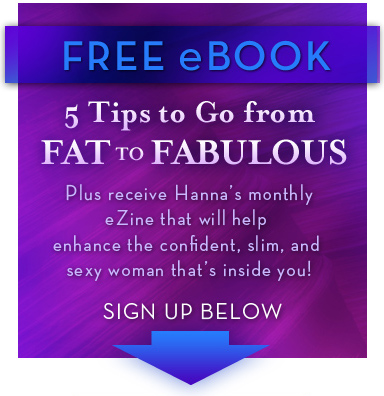I still self-medicate with food.
When I’m writing and have deadline stress, all of a sudden I feel like I “need” popcorn. It is irrational and powerful and does not let up until I eat some popcorn.
So often, overeating is about what’s happening on the inside. It’s reaching for food when you are really seeking love, acceptance, happiness, or comfort in the face of a difficult situation or relationship.
My coach has helped me discover that my “pressure cooker” feelings of deadline stress are old limiting beliefs about what I’m capable of. It’s the tyrant inside me—who I have quieted in so many areas of my life—who is still bullying me to perform and be “perfect.” I’m coming up with ways to self-soothe rather than self-medicate with food.
I wanted to share this blog by Dr. Anne Nanmoum because I thought she did a fabulous job of describing the difference between self-soothing and self-medicating those painful emotions you may be avoiding by reaching for your favorite comfort food.
After a particularly stressful day, a friend of mine noticed that she came home from the grocery store with several items she would not normally buy: a wine cooler, an apple pie, and a gallon of ice cream. “If I keep up with this, I will end up fat and miserable as well as stressed out!”
She realized that she needed to come up with a better approach to handling her stress, including ways to “self-soothe” rather than “self-medicate.”
The ability to self-soothe rather than self-medicate in the face of stress, anxiety, boredom, or other uncomfortable emotions is an important skill for healthy living. When we don’t have good strategies for self-soothing, we may be inclined to overeat, abuse alcohol or drugs, bury ourselves in work, or spend hours watching TV or YouTube videos in order to “numb” ourselves.
What is the difference between self-soothing and self-medicating?
Self-medicating generally involves doing something that distracts from or avoids the uncomfortable feeling, at least temporarily. In addition to the more obvious forms of self-medicating with alcohol or drugs, self-medicating can also take the form of compulsive shopping, over-exercising, video games, or any activity that anesthetizes us from the discomfort without addressing the underlying problem. (Like when taking painkillers for a broken bone without setting the fracture, the pain will return when the medication wears off.)
While self-medicating involves numbing and avoiding, self-soothing involves acceptance of the discomfort, and the decision to do something that will make us feel better in the long term as well as the short term. Self-soothing does not involve activities that will ultimately hurt our health, relationships, or integrity.
Self-soothing could be the decision to go for a walk rather than eat that pint of Ben & Jerry’s ice cream, or call a friend rather than drown our anxiety or exhaustion in a few glasses of wine. Writing in a journal, gardening, doing yoga, painting, or just taking a few deep breaths can also be self-soothing.
Sometimes an activity can go from self-soothing to self-medicating when done excessively or compulsively, even “healthy” activities such as exercise, work, or community service.
Try asking yourself these questions if you are trying to decide if you are self-medicating:
- Am I doing this in order to avoid an uncomfortable feeling or situation?
- When the pleasure of this activity wears off, will I feel better about myself and the situation, or worse?
- Is this activity likely to bring me closer to those people I want to be close to, or create more distance?
We all self-medicate to some extent, or as author and researcher Brené Brown describes it, we engage in an activity to “take the edge off” of the pain, anxiety, disappointment, shame, or other difficult emotions we are facing. Her research has shown that individuals who are able to feel the feelings, stay mindful about the  numbing behaviors, and try to lean into the discomfort of unpleasant emotions are more likely to be healthy and happy.
numbing behaviors, and try to lean into the discomfort of unpleasant emotions are more likely to be healthy and happy.
While virtually everyone numbs and takes the edge off to some extent, addictions develop when the numbing behaviors become compulsive and chronic.
For me, reading books can be self-soothing, but at other times it can be self-medicating if it keeps me from confronting a situation that is bothering me, or distances me from my family members. (My children would likely point to the piles and piles of self-help books in my office as evidence that this is something of an addiction for me.)
The first step in moving from self-medicating to self-soothing is to notice when we are “numbing,” and to get curious about what we are numbing from. Exploring different options for self-soothing, finding which appeal to us most, and practicing a few of these regularly can reduce our tendency to self-medicate when faced with unpleasant emotions.
 Anne Nanmoum, M.D. is a Johns Hopkins trained OB/GYN and Reproductive Endocrinologist who wants women to thrive rather than just survive. She offers workshops and seminars in the Atlanta area on the science of happiness and well-being, and factors that influence your health such as stress, hormones, and nutrition. She believes that being well-informed gives you the ability to make healthier choices, but medical information is often contradictory, confusing, and ever-changing. She uses her background as a medical doctor to share information in a way that is evidence-based but easy to understand in order to help you take better care of yourself. Her goal is to give women the insight and confidence they need to become their own health experts and advocates.
Anne Nanmoum, M.D. is a Johns Hopkins trained OB/GYN and Reproductive Endocrinologist who wants women to thrive rather than just survive. She offers workshops and seminars in the Atlanta area on the science of happiness and well-being, and factors that influence your health such as stress, hormones, and nutrition. She believes that being well-informed gives you the ability to make healthier choices, but medical information is often contradictory, confusing, and ever-changing. She uses her background as a medical doctor to share information in a way that is evidence-based but easy to understand in order to help you take better care of yourself. Her goal is to give women the insight and confidence they need to become their own health experts and advocates.
To read her blog go to http://www.annenamnoum.com/self-soothing-vs-self-medicating/




I really appreciate, in a deep way, all of the moments of self-disclosure in this blog and article. Transparency. Transparency is a gift to yourself, and to others. Thank you!
You are welcome, Mary. Glad it was meaningful for you. Thanks for commenting!
Hey, I found my way over to your new website! I was getting kind of lonely at the old one. Looks awesome!
I’ve been self-soothing with meditation all day today, which I’m pretty sure is a healthy thing, although I’m sure it’s possible to get carried away even with that.
But I’ll try to come back to down to earth at some point, promise.
Happy holidays and many blessings for the new year! 🙂
Yes, balance in all things! But I congratulate you for self-soothing with meditation. That is a powerful way to self-soothe. Happy Holidays! Wishing you health and happiness in the New Year! So appreciate you!
Thanks for another great post! It really hit home and I need to figure out how to self-soothe instead of self-medicate. As always, I look forward to reading more!
So glad it was helpful, Teresa! Would love to hear your strategies for self-soothing. So appreciate you! Thanks for commenting!